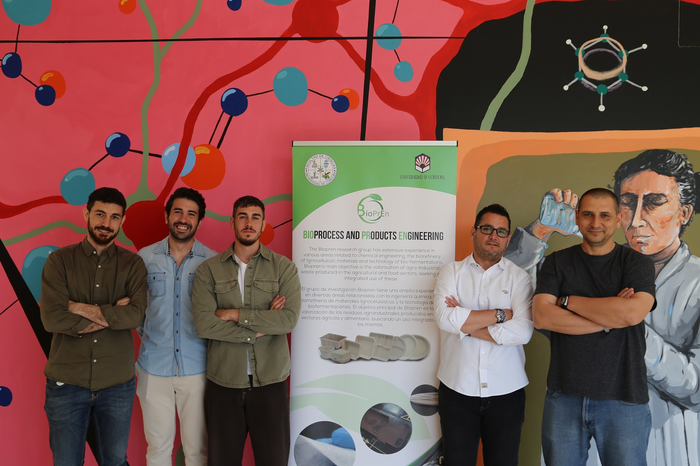The University of Cordoba has created a biodegradable material made with nanocellulose and photocatalytic particles to effectively decontaminate urban air.
 Research team. Image Credit: University of Cordoba
Research team. Image Credit: University of Cordoba
Air pollution and its high concentration in cities are one of the most pressing issues confronting society today because of its negative impact on the environment and human health. One source of this pollution is a rise in nitrogen oxide emissions, mainly caused by fossil fuel usage.
While these gases’ emissions are being lowered, photocatalysis is emerging as a valuable method for decontaminating air in cities. Materials known as semiconductors are developed that, when in contact with a pollutant, decompose it under the influence of ultraviolet light, lowering its concentration in the air.
The University of Cordoba’s Chemical Institute for Energy and the Environment (IQUEMA) and the Department of Inorganic Chemistry and Chemical Engineering have collaborated to develop these materials.
The BioPrEn and Inorganic Chemistry groups collaborated to create biodegradable polymers to fix nanoparticles with photocatalytic activity (in this case, titanium dioxide), increasing the power and, hence, the decontaminating impact.
This work’s advancements include: “first, the creation of a biodegradable medium based on nanocellulose, obtained from agricultural waste; and, second, the development of a surface modification process of these nanoparticles, which results on their greater dispersion and immobilization, and therefore, enhanced photocatalytic activity,” states one of the authors of the article, Researcher Eduardo Espinosa.
The achievement is twofold: it is now possible to make a sustainable material by recovering agricultural waste (contributing to the circular economy), and the method of attaching photocatalytic nanoparticles to this biodegradable medium has been simplified.
The benefit is exponential because the porosity and three-dimensional nature of the material result in higher air decontamination, exposing more photocatalytic particles to UV light than an opaque substance or one with only one surface exposed to light.
What is it Like and Where is it Used?
Those who view it will know it as a light, solid foam with a low density, comparable to insulation wraps used in construction or popular corn “puffs.” To carry out decontamination, “it can be used as a porous filter through which the gas stream passes, always exposed to ultraviolet light, and the gas comes out decontaminated,” says Espinosa. For instance, gases emitted by industry would be nearly free of nitrogen oxides.
A further step in this research would be to tweak the photocatalytic particle so that it is more sensitive to visible light than UV light. In this way, the photocatalytic power would indeed be stimulated by sunlight alone. This sort of technology can be implemented in textiles and other materials, further decreasing the concentration of gases only through exposure to the sun.
Journal Reference
Carrasco, S., et al. (2023) Simple Route to Prepare Composite Nanocellulose Aerogels: A Case of Photocatalytic De-NOx Materials Application. ACS Sustainable Chemistry & Engineering. doi.org/10.1021/acssuschemeng.2c06170.